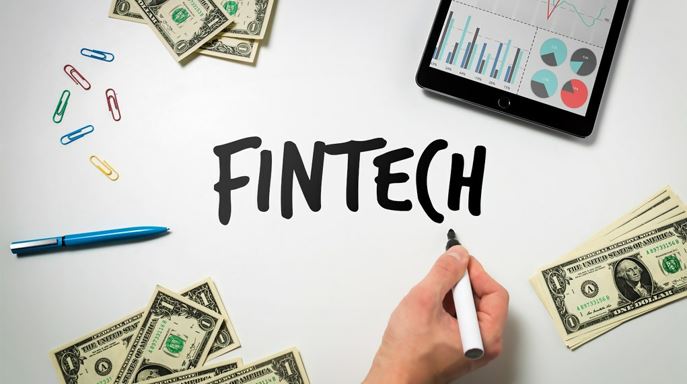A FinTech Application is a type of software application designed to automate and digitize financial services. FinTech apps are products of the Fintech industry, which combine finance and technology to improve the access to financial services and compete with traditional financial institutions.
FinTech applications provide simpler and more efficient ways to access and manage finances and often offer alternative financial systems (such as blockchain and cryptocurrencies).

Advantages of FinTech Applications
There are a number of advantages of FinTech compared to traditional financial services that have contributed to FinTech app development. They include the following:
- Greater accessibility. FinTech applications usually don’t have such a complicated account opening process as traditional companies. It’s enough for the user to have the Internet and sign up to have access to financial services such as payments, loans, insurance, trading, etc.
- Cost reduction. FinTechs are digital products that usually don’t have any brick-and-mortar costs, which allows them to offer clients lower fees than traditional banks.
- Improved financial operations. FinTech applications allow users to manage their finances with a smartphone or tablet, which significantly saves time and speeds up financial transactions, whether it’s payments or credit approval.
- Wide range of solutions. FinTech applications offer a huge range of services from digital payments and insurance to investing and financial advisory assistance. Often, one application includes several services that allow you to conduct various financial transactions using one product.
- Personalization. FinTech technologies allow applications to effectively collect and process users’ data and offer them personalized services that meet their financial goals and capabilities.
Types of FinTech Applications
FinTech is a broad category that encompasses many different types of financial services. The most popular types of FinTech applications include the following:
Digital banking and neobanks – provide banking services online 24/7 without requiring the client to visit a physical branch to open an account or take out a loan. Examples include Revolut, Chime and Monzo.
Open banking – enables third parties (FinTech application developers) to access the client’s bank data with their consent to create a connected network of financial services for convenient financial management. The use case of open banking is Plaid which allows users to log in and share their data securely.
Insurtech – helps streamline insurance processing by providing improved risk assessment, which is a faster way to apply for coverage or process claims. Examples include Hippo, Steppie, Lemonade, etc.
Regtech – helps financial service companies meet industry compliance regulations, such as Anti Money Laundering (AML) and Know Your Customer (KYC). ComplyAdvantage is an example of such a FinTech software.
Loan applications – provide accelerated processes thanks to peer-to-peer lending that connects the lender and the borrower directly. Examples are Dave and Money Lion.
Digital payments – offer faster transactions with lower fees. The most famous FinTech payment applications are Paypal, Venmo, Zelle, and CashApp.
Robo-advisors – provide algorithm-driven financial planning services at significantly lower costs than human financial advisors. It’s often part of personal finance management apps. Examples: Wealthfront, M1 Finance.
Personal finance management apps – consolidate the user’s finances in one place for effective money management. Allows you to manage income and expenses, set financial goals, and increase capital. The most famous examples are Mint and YNAB.
Cryptocurrency apps – allow you to hold crypto assets and carry out transactions with cryptocurrencies. Includes crypto wallets, payments, exchanges, and trading platforms.
As already mentioned, there is a trend in the market of combining several types of services in one application. For example, the Robinhood app combines investment, crypto exchange, stock trading and banking services to help users to improve their financial well-being.
Technologies Used to Build FinTech Applications
FinTech is associated with innovative technologies such as
- Artificial Intelligence (AI)
- Cloud computing
- Blockchain and cryptocurrency
- Internet of Things (IoT)
- Big data
Incorporation of these technologies into the FinTech application architecture allows for a number of advantages in terms of speed, efficiency, security and scalability of the product.
For example, artificial intelligence and machine learning algorithms provide efficient processing of large data sets and automation of financial operations with natural language processing, speech recognition, computer vision and other technologies.
Blockchain enables alternative financial systems built on a distributed database that provides more transparency and control to users. The implementation of the blockchain led to the emergence of a new direction of financial technologies – Decentralized Finance (DeFi), which provides peer-to-peer digital financial services without intermediaries.
FinFech Application Market Insights
According to Sensor Tower, worldwide downloads of FinTech apps exceeded 6.1 billion in 2021.
The FinTech market is developing all over the world and the largest Fintech hubs include the USA, UK, China, Singapore, Australia, China, and Germany.
Video – What is Fintech?
This interesting video presentation, from our YouTube partner channel – Marketing Business Network, explains what ‘FinTech’ is using simple and easy-to-understand language and examples.
